The eeriest abandoned attraction to visit in every state and DC
America's most intriguing deserted places

The USA is crammed full of museums designed to be a window into times gone by – but sometimes the country's fascinating abandoned buildings do a better job of bringing the past into focus.
From mysterious ghost towns and long-deserted mansions, to abandoned theme parks and empty prisons, we reveal the eeriest attraction in every state and DC...
Alabama: Old Cahawba Archaeological Park, Orrville
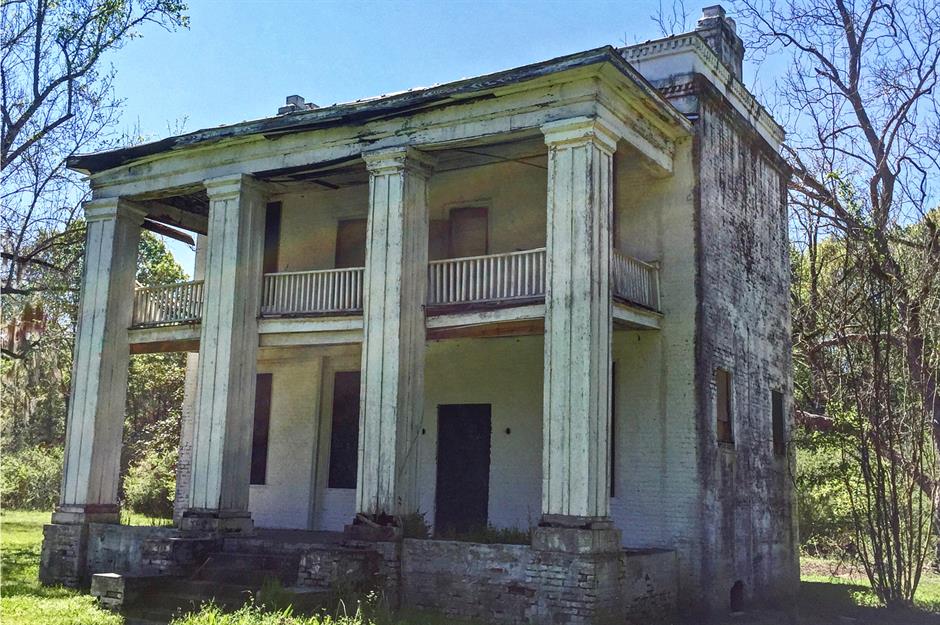
Described as 'Alabama's most famous ghost town,' Old Cahawba became the state capital around 1819. But, given Cahawba's reported proneness to flooding, the capital was moved to Tuscaloosa by 1826.
The town managed to survive this initial blow, but its fate was sealed during the Civil War, when Confederate soldiers tore up sections of the town's railroad and built a large prison at its center. Today visitors can wander around the site, taking in the deserted buildings rising among moss-cloaked trees and wildflowers.
Alaska: Kennecott, near McCarthy
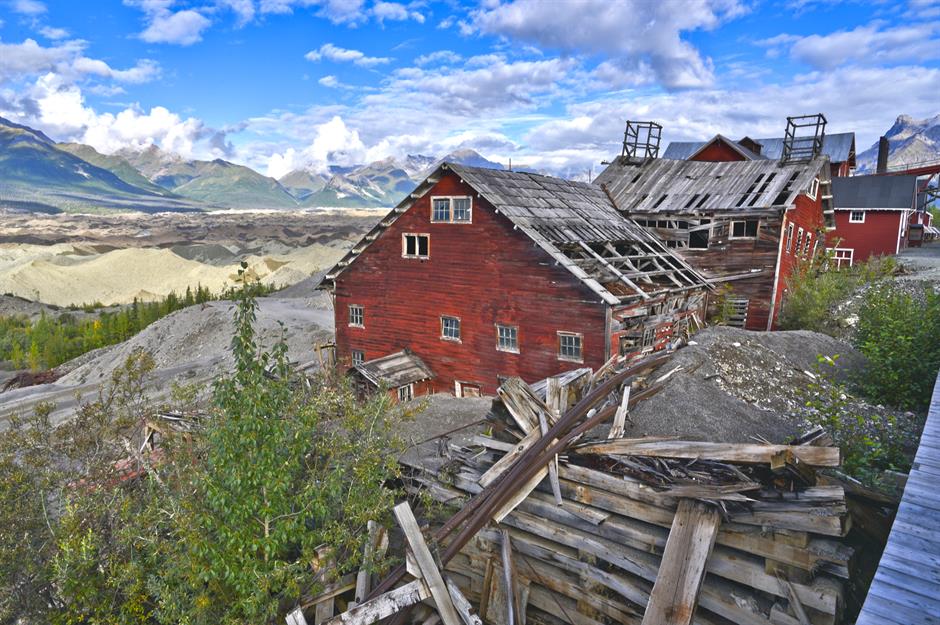
Protected today as a National Historic Landmark District, and within Wrangell-St Elias National Park, Kennecott (also Kennicott) was once a thriving copper-mining camp. But the site's existence was short-lived.
Established in the early 1900s, the town was all but abandoned by 1938, as the area's copper reserves were exhausted, and the miners moved on. The site's deserted rust-red buildings and mountain views can be explored by visitors on their own, although you need a ticket to tour the mine.
Arizona: Vulture City, Maricopa County

Vulture City is an abandoned mining site in the Sonoran Desert. The mine dates back to 1863, when gold was discovered in the area – a thriving community soon formed around it and the mine would flourish until its eventual closure in the 1940s.
Self-guided tours are currently available, allowing visitors to explore the once-bustling town and see the old cookhouse and post office. It’s recommended that visitors pre-purchase their admission.
Arkansas: Peppersauce, Calico Rock
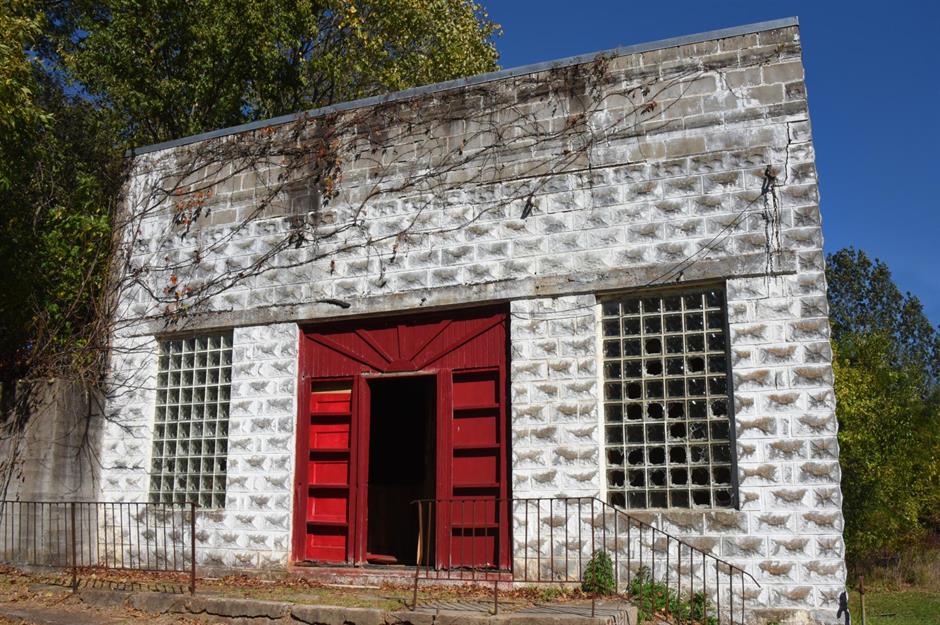
This intriguing ghost town exists within the limits of Calico Rock, a small city in northern Arkansas. Situated in the eastern part of town, the abandoned district is home to around 20 derelict buildings, including a barber shop, a cotton gin, and a funeral parlor, many of which have been reclaimed by Mother Nature.
The area’s demise has largely been put down to a decline in the cotton industry on which it relied. Plaques revealing the buildings’ secrets are dotted about Peppersauce and visitors can take a self-guided walking tour. This image shows an abandoned funeral home.
California: Bodie, Mono County
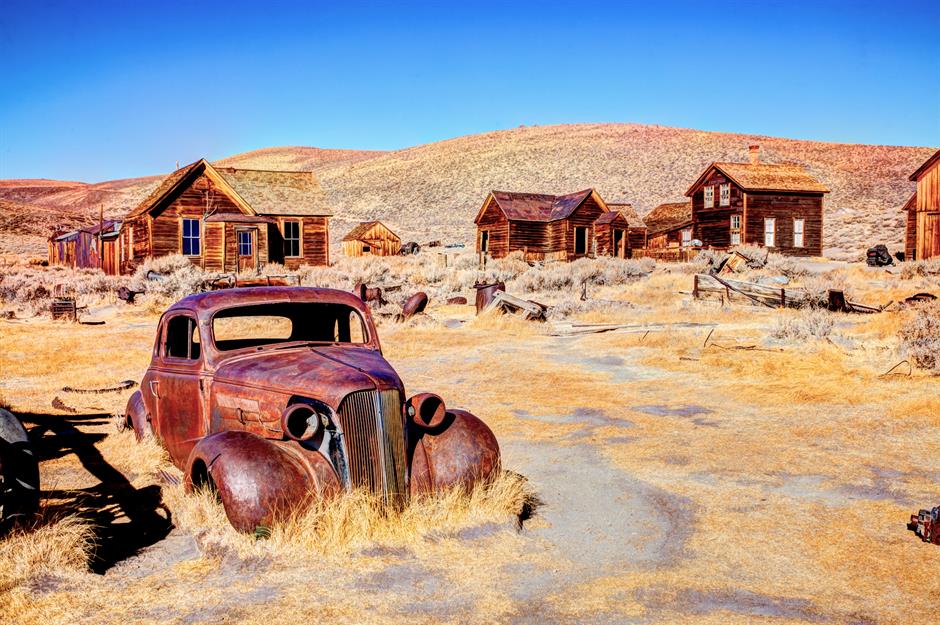
One of the best-known and most wonderfully preserved ghost towns in America, Bodie is tucked away in California’s Eastern Sierra region. The town was at its peak between 1877 and 1882, when the mining industry was booming, and some 10,000 people called Bodie home.
Now those residents are long gone, but around 200 ramshackle wooden buildings – including a saloon and a barber shop – give visitors a taste of the past. Some unstable sections of the Historic Park are closed to entry.
Colorado: Crystal Mill, Crystal
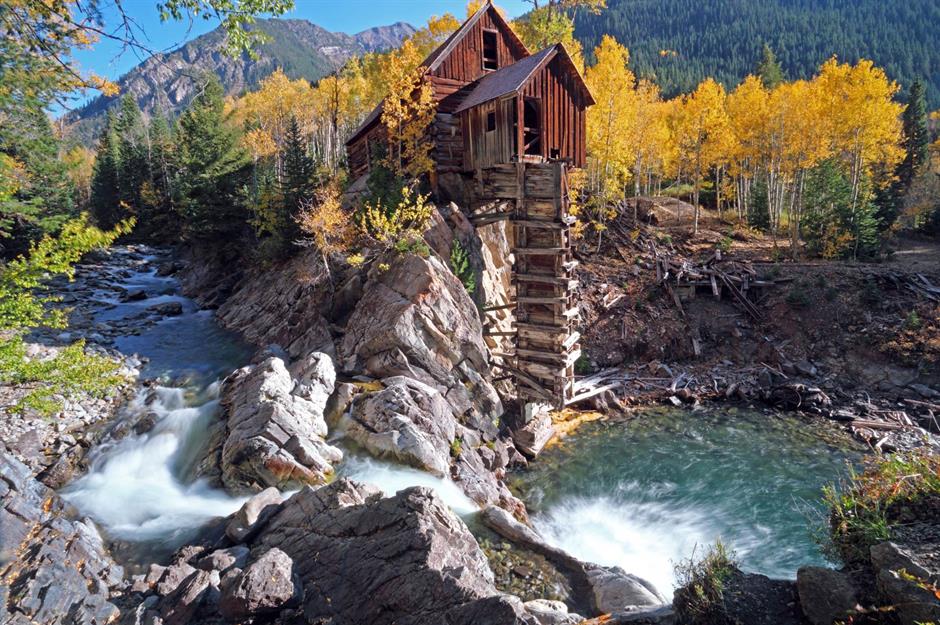
Resembling something between a witch’s cottage and an enchanted treehouse, this curious structure could be plucked straight from a fairytale. In fact, the mill, perched on craggy rocks above the Crystal River and dating back to the early 1890s, once functioned as a power plant for local silver mines. The mines closed in 1917 and Crystal Mill was abandoned too.
Today, it’s on the National Register of Historic Places and, while you can’t go up to the cabin itself, it can be viewed via a challenging hike from the tiny secluded town of Marble.
Connecticut: Shade Swamp Sanctuary, Farmington

A series of eerie rusting cages and rickety wooden shelters make up the abandoned Shade Swamp Sanctuary in Farmington. The site, built by the Civilian Conservation Corps, dates back to the 1930s, and was intended as a sanctuary for native animals that were injured or endangered.
However, up until the center's eventual closure in the 1960s, it was also home to non-native creatures such as monkeys. The leafy Shade Swamp Sanctuary Blue Trail stretches out for a little over a mile and wiggles past the zoo's remains.
Delaware: Gibraltar Mansion, Wilmington

Located at 2505 Pennsylvania Avenue in Wilmington’s Marian Coffin Gardens, Gibraltar Mansion has all the trappings of a typical haunted house: cracked and shuttered windows, a tangle of ivy creeping across the stonework, and a perpetually locked door. The site was abandoned and left to fall in disrepair in the 1990s when the then-owner passed away.
However, even though the house, built in the 1840s by cotton merchant John Rodney Brinckle, stands moldering and derelict, the gardens have been lovingly restored and are open for tours led by the Garden Manager.
District of Columbia: National Capitol Columns, Washington DC
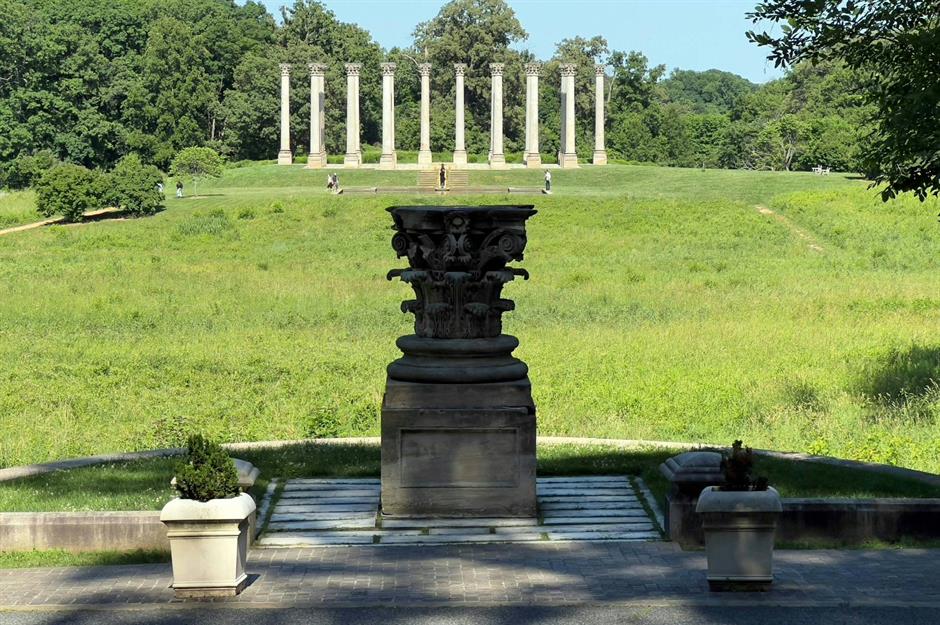
Erected in 1828, these photogenic Corinthian columns once formed part of the US Capitol building. But there were concerns over the columns’ suitability to hold up the mammoth dome, completed in 1864 to a size much larger than the designer had originally envisioned.
The columns remained part of the iconic building up until 1958, and today they’re hidden away in the U.S National Arboretum in DC. Make sure you also visit the onsite National Bonsai and Penjing Museum.
Florida: Bongoland, Port Orange
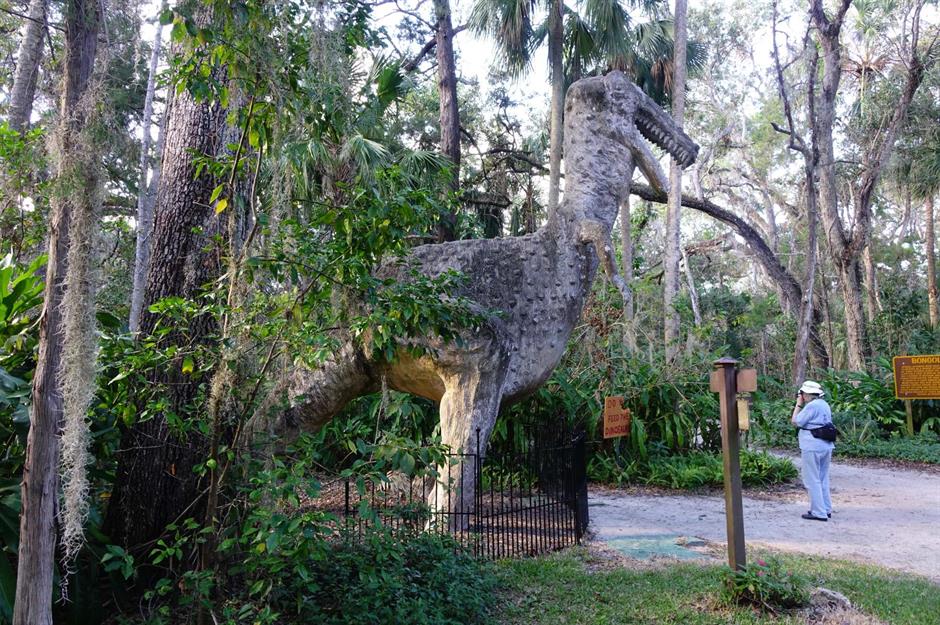
While Florida is synonymous with Disney World and Universal Studios, the Sunshine State has a darker side and the ruins of Bongoland remain an undiscovered mystery for many.
Tucked away from civilization off Old Sugar Mill Road, this Floridian relic shrouds gigantic cement beasts in dense foliage, hiding traces of a failed theme park. It's been decades since Bongoland has been operational, and the crumbling dinosaur statues are an interesting glimpse into the past.
Georgia: New Manchester Manufacturing Company, Sweetwater Creek State Park
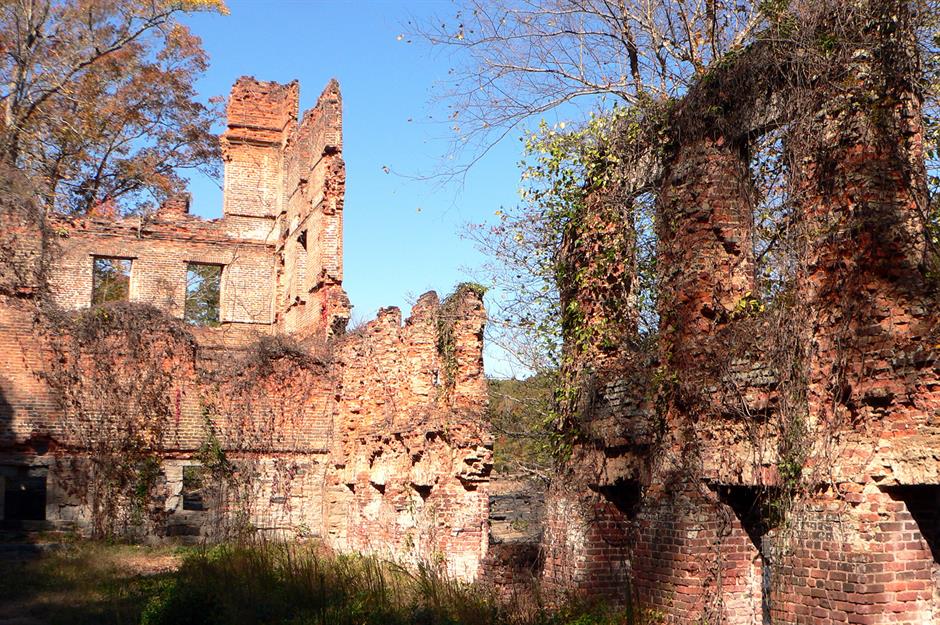
Today, the crumbling remains of the New Manchester Manufacturing Company are shrouded by the forest of Sweetwater Creek State Park. Dating back to the mid-1800s, the building was originally a working five-story textile mill, but it was almost burned to the ground by Union troops during the Civil War.
Beginning in 2016, steps were taken to preserve the ruins and prolong the life of the structure. Trails lead to the red-brick ruin and visitors can even peek inside on a guided hike.
Hawaii: Old Club Med, Kauai
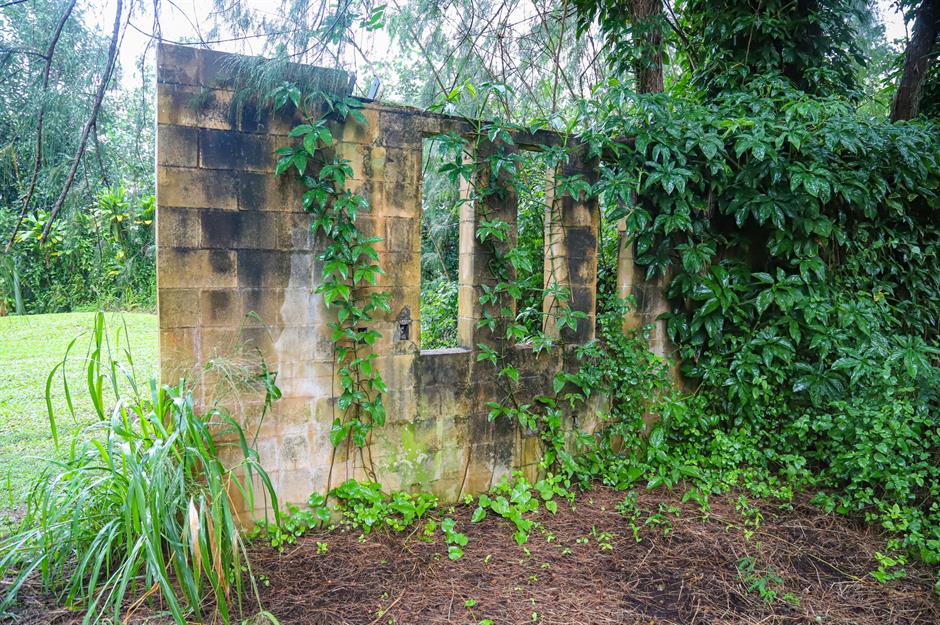
The eerie ruins of an old resort are tucked away above Hanalei Bay, on the north shore of The Garden Isle. Old Club Med had its glittering heyday in the Sixties and Seventies after it had been converted from the Hanalei Plantation Hotel.
Today, all that's left is a series of weather-beaten walls and foundations shrouded by greenery. It's accessible via the verdant Old Club Med Trail.
Idaho: Old Idaho State Penitentiary, Boise
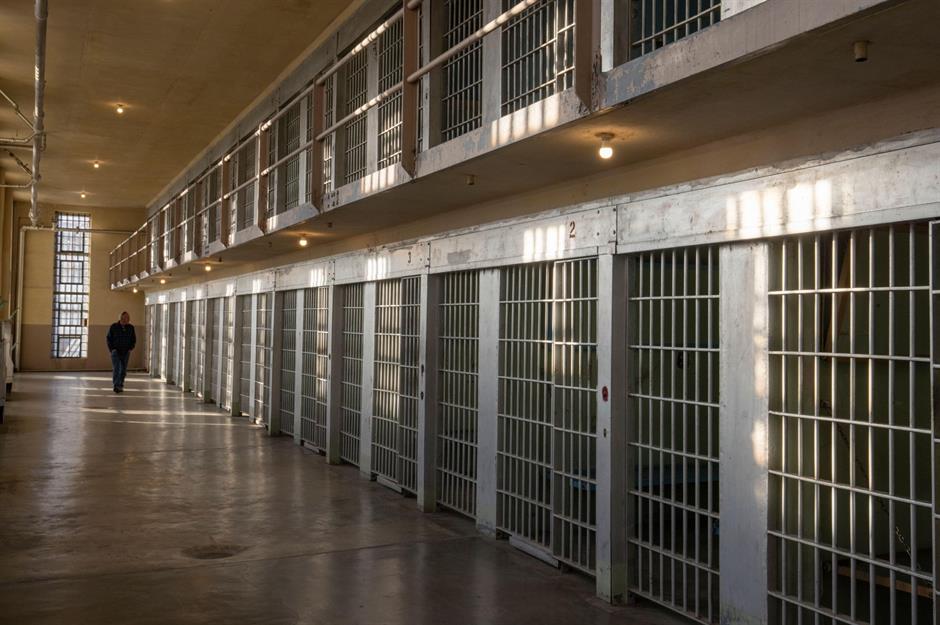
The creepy corridors and creaking cell blocks of the Old Idaho State Penitentiary were built in the early 1870s and, during the prison’s century in operation, some of the state’s most formidable criminals were incarcerated here – including the infamous Lyda Southard, a suspected serial killer who is believed to have murdered four of her husbands.
But by the 1970s the prison was outdated, with poor sanitation and inadequate space for the constant influx of inmates. The prisoners were transferred elsewhere, and the facility was finally closed. Today, the site is preserved by the Idaho State Historical Society, with guided tours available.
Illinois: Old Joliet Prison, Joliet
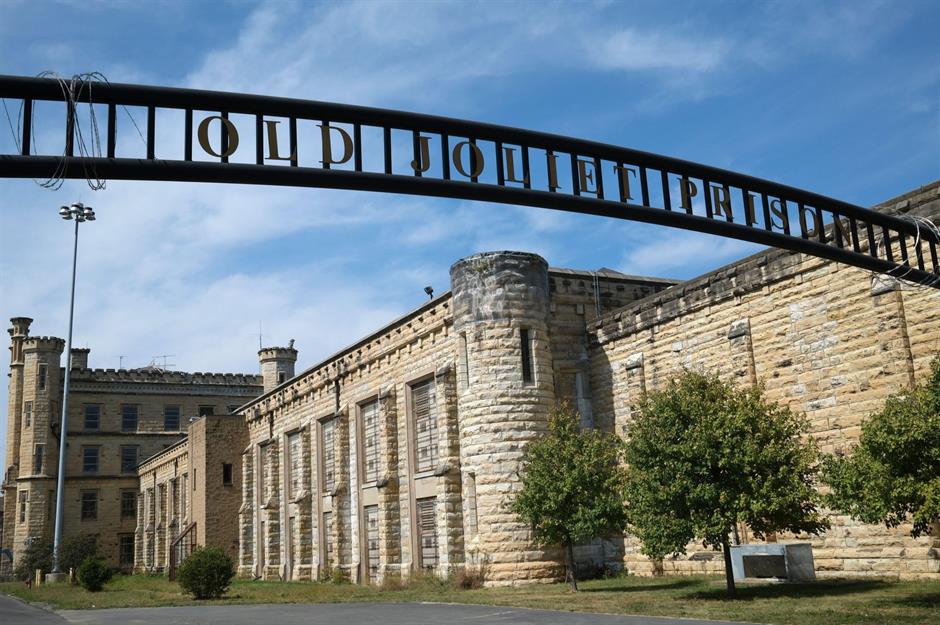
Gothic Joliet Prison was opened in 1858, having been built in part by a group of inmates themselves. But just two decades later, the prison’s population was over capacity and conditions suffered.
Still, despite this early deterioration, the prison didn’t close its doors until 2002. Ninety-minute walking tours of the castle-like site are now run by the Joliet Area Historical Museum. The atmospheric building was used as a location for hit TV series Prison Break too.
Indiana: Rose Island Amusement Park, Charlestown
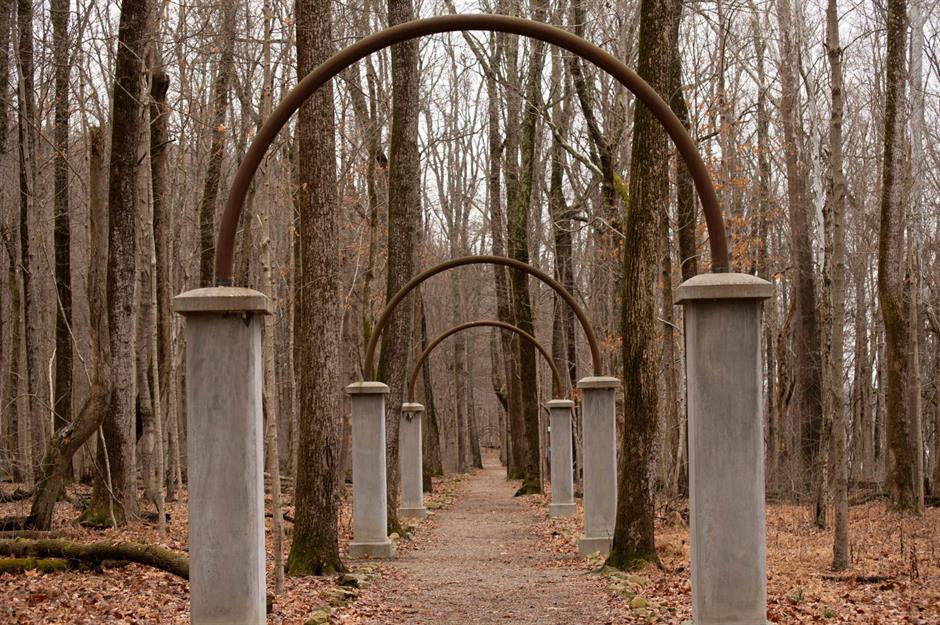
Rose Island was a kitsch amusement park beloved by locals during the early 20th century, but it was all but washed away by the Ohio River flood of 1937.
Today the leafy Charlestown State Park protects the site’s eerie fragments: a decaying stone fountain, a series of metal archways, and an overgrown swimming pool with ladders leading to nowhere. Dotted amid the park’s remnants, information boards offer a glimpse of the site’s former glory.
Iowa: Buckhorn, Jackson County
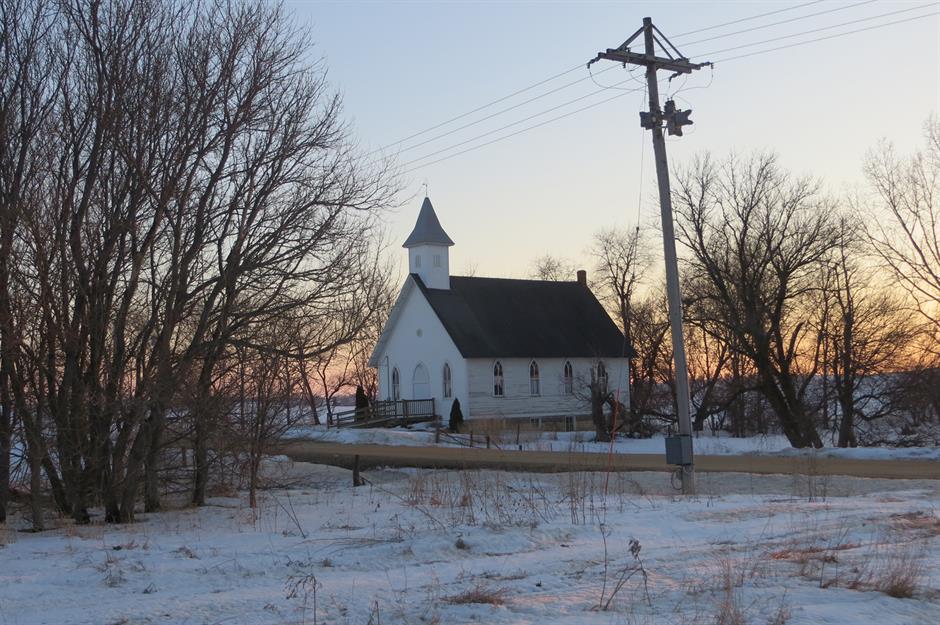
Very little remains of this teeny ghost town in Iowa's Jackson County, a mysterious scattering of buildings off the area's Highway 64.
Visitors will find no historical plaques here, but the crumbling creamery, abandoned cemetery, and shuttered whitewashed church speak for themselves. It's typically possible to wander around outside the haunting structures, but don't go inside – they're private property.
Kansas: Elk Falls, Elk County

Dubbed a ‘living ghost town,’ this curious spot just upriver from the 1893 Iron Truss Bridge in southeastern Kansas still has a small community of around 100 people. The population steadily declined throughout the 1800s and amid the small collection of living businesses – a pottery, a tannery, and a dinky bed and breakfast – there’s a string of eerie abandoned buildings.
This one, with its faded red bricks and overgrown windows, is particularly atmospheric. Thoughtfully placed plaques help bring the town’s history into focus.
Kentucky: Waverly Hills Sanatorium, Louisville

Construction of the mansion-like Waverly Hills Sanatorium was completed in the 1920s for the Board of Tuberculosis Hospital. But, following the discovery of antibiotics that could treat TB, the sanatorium closed in 1961. It had a brief stint as a care facility for the elderly before being abandoned entirely by the 1980s.
For years it stood deserted, but today guided historical tours and ghost hunts take brave visitors through the moldering corridors, tattered staircases, and long-empty wards – reservations are required.
Louisiana: General Laundry Building, New Orleans

While there’s no doubt it's seen better days, this 1930s Art Deco building is still a sight to behold. More than just a laundry facility, during its heyday the building also held monthly fashion shows, and its Aztec-style patterns and intricate carvings still draw admirers today.
It's been threatened with the wrecking ball more than a few times in its long history, but it was finally given Historic Landmark designation in February 2023.
Maine: Goddard Mansion, Cape Elizabeth

A haunting relic of the past, this once grandiose structure was built on the grounds of Fort Williams Park in Cape Elizabeth in 1858 for Orono lumber baron/Civil War Colonel John Goddard. In 1900, it became part of Fort Williams when the US Army expanded its operations at Portland Head.
After the Army closed Fort Williams in 1962, the mansion fell into disrepair and was intentionally burned in 1981 due to safety concerns. All that remains today is the stone shell, which you can view from the outside.
Maryland: Daniels, Baltimore County and Howard County
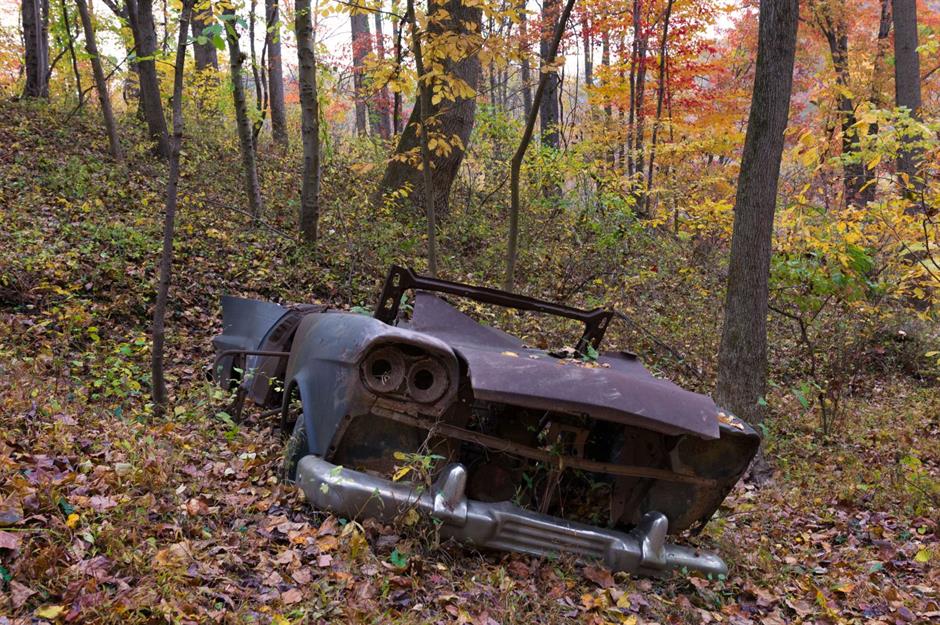
Now left tattered and forgotten among dense woodland, Daniels was once a thriving industrial town. Its roots go back to the early 1800s, when a man named Thomas Ely decided to establish a textile mill here. A busy community sprouted around the mill, which closed in the 1960s.
In 1972, tropical storm Agnes wreaked havoc on the town, ripping through many of the already abandoned buildings. Today, Daniels' remains are visible on a hike along the Patapsco River.
Massachusetts: The Spruces, Williamstown
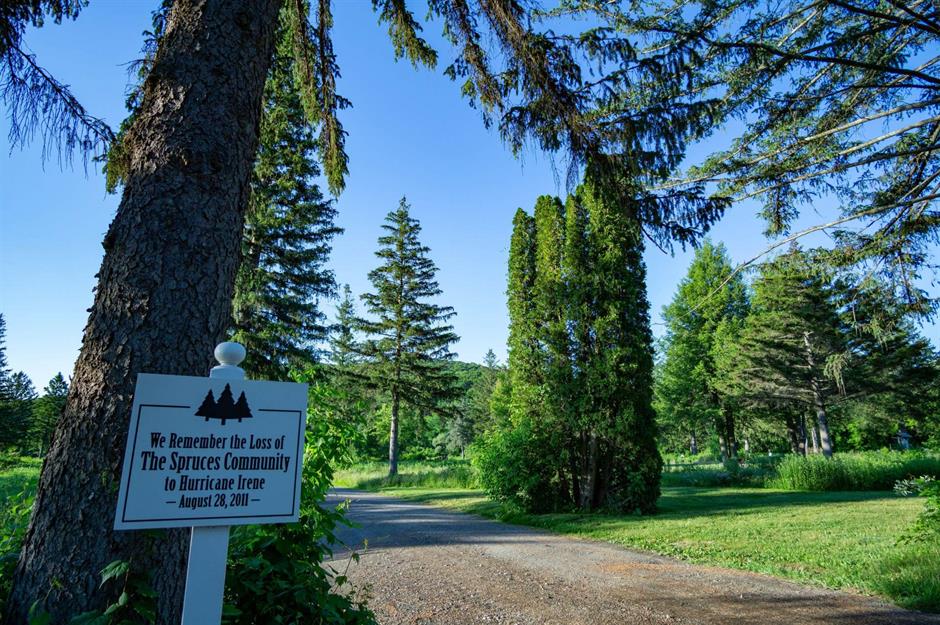
The abandoned neighborhood of the Spruces is now a park filled with beautiful trees, wildflowers, and hints of its past. Visitors traveling on Route 2 between Williamstown and North Adams will pass two white lion statues resting on high pedestals, with the dirt road leading to a decrepit estate.
Prior to 2011, the land was a mobile home park and retirement community, which was condemned after the Hoosic River overflowed its banks during tropical storm Irene. It is now an odd park that hasn't shaken off the ghosts of its former inhabitants, which you can walk through.
Michigan: Quincy Mine, Hancock
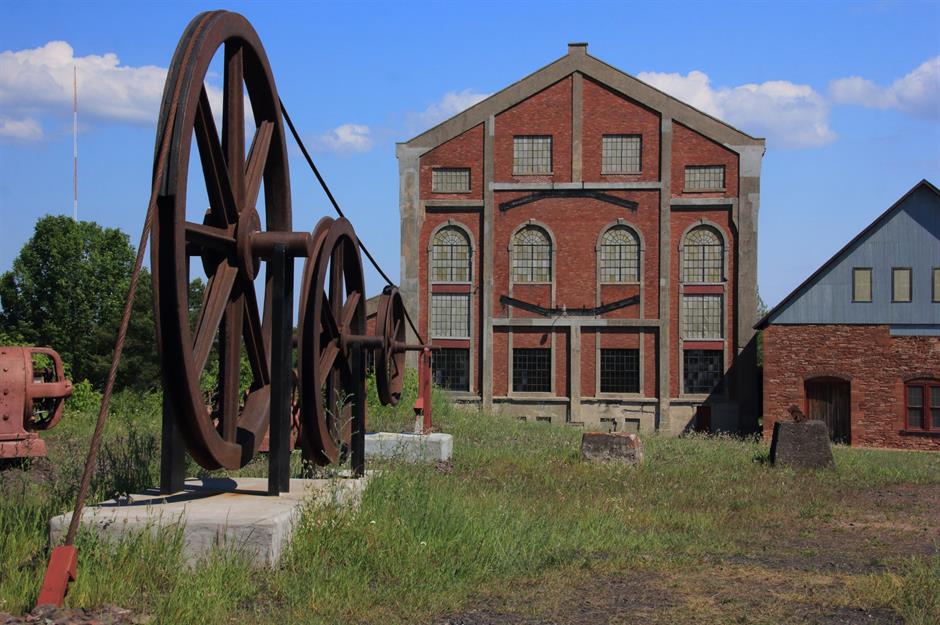
Now protected by the Quincy Mine Hoist Association, this extensive set of copper mines nestled in the quiet town of Hancock played a significant part in the industrialization of America, before ceasing operations around 1945.
Today, the association gives curious visitors rare access to the deserted buildings on the site, part of the Keweenaw National Historical Park, from a tour of the underground mine to a close-up look at the shaft house.
Minnesota: Tanner's Hospital, Ely
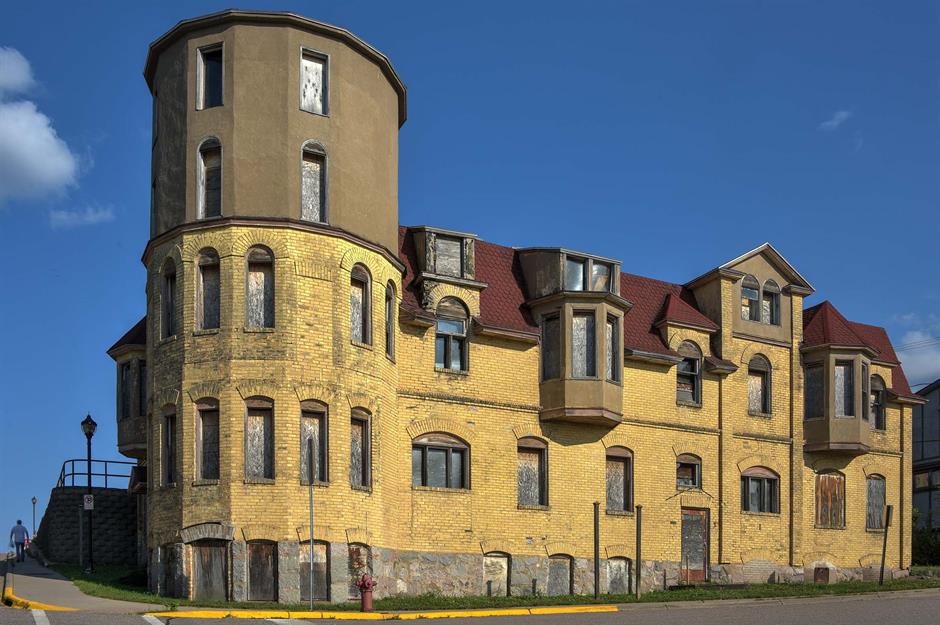
Despite the boarded windows and grubby brickwork, this former hospital, also formerly known as the Carpenter's Hospital and nicknamed 'the Castle,’ remains an impressive sight.
With its imposing round turret, arching windows, and striking red roof titles, the building, constructed in the early 20th century, is still a source of local pride, and it found its way onto the National Register of Historic Places in 1980. It’s not possible to enter the property, but plenty of architecture buffs gaze up at it from the street.
Mississippi: Rodney, Jefferson County

A cluster of haunting, abandoned buildings are all that remain of this once-thriving riverside town. Dating back to the 1820s, Rodney diminished after the Civil War, mainly due to a change in the course of the Mississippi River and a pair of ravaging fires.
Today, the deserted structures are lovingly watched over by the Rodney History and Preservation Society. One of the most eerie is the abandoned gas station.
Missouri: Ha Ha Tonka Castle, Ha Ha Tonka State Park

Location is the real drawcard of this enchanting ruin. Overlooking the vast Lake of the Ozarks, Ha Ha Tonka Castle is nestled within the forest of its namesake state park. Inspired by the fairytale castles of Europe, businessman Robert Snyder began building the majestic property in 1905.
By 1942, the property was being used as a hotel, but a devastating fire gutted the grand building. Today, guided and self-guided visitors can explore the ruins – enough remains that it's easy to imagine the building’s former grandeur.
Montana: Bannack, Beaverhead County
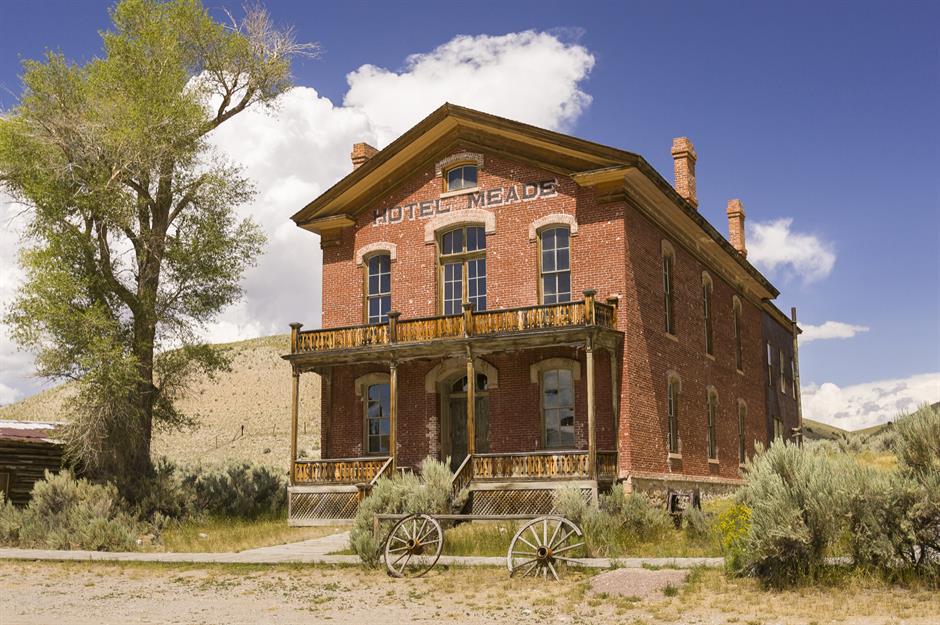
This ghost town in southwestern Montana, now Bannack State Park, is home to some 60 historical structures. Bannack was established in 1862, when prospector John White struck gold nearby and it remained a mining town until the 1930s.
By the 1950s, though, reserves were diminished, and the town was eventually abandoned. Now self-guided tours allow visitors to peek inside the old buildings, from the drugstore to the schoolhouse.
Nebraska: St. Deroin, Nemaha County

A tiny ghost town within the limits of Indian Cave State Park, St. Deroin has been all but abandoned for almost a century. Surrounded by woodland today, the town was once the site of a busy ferry crossing, but when the Missouri River changed course, the settlement fell into decline and by the 1920s it was completely deserted.
Curious modern visitors can explore the preserved St. Deroin cemetery, as well as the old schoolhouse and general store. Living history events are also held, showcasing old-time crafts and activities.
Nevada: Rhyolite, Nye County

Situated just outside the boundaries of Death Valley National Park, Rhyolite is one of the most photographed ghost towns in the West. Prospectors found quartz in the area as early as 1904 and a town filled with stores, houses, a school, and even hotels soon bloomed.
Its success was fleeting though: by 1910, business began to decline and by 1916 Rhyolite was completely abandoned. Today, reminders of the town's existence pop up across the stark landscape, from parts of an old jail to a decrepit bank building.
New Hampshire: Madame Sherri’s Castle, Chesterfield

Swallowed up by the Madame Sherri forest, these enchanting ruins have a tale to tell. The castle was once owned by eccentric Madame Sherri, a costume designer with a penchant for lavish parties. It began to crumble away after Madame Sherri left the property behind, and was all but destroyed by a fire in 1962.
Still standing are some of the castle’s stone walls, carved out with arches and a swirling stairway. Hikers can see the ruins on an easy trail through the forest – check safety advice before you go.
New Jersey: Ellis Island Immigrant Hospital, Ellis Island
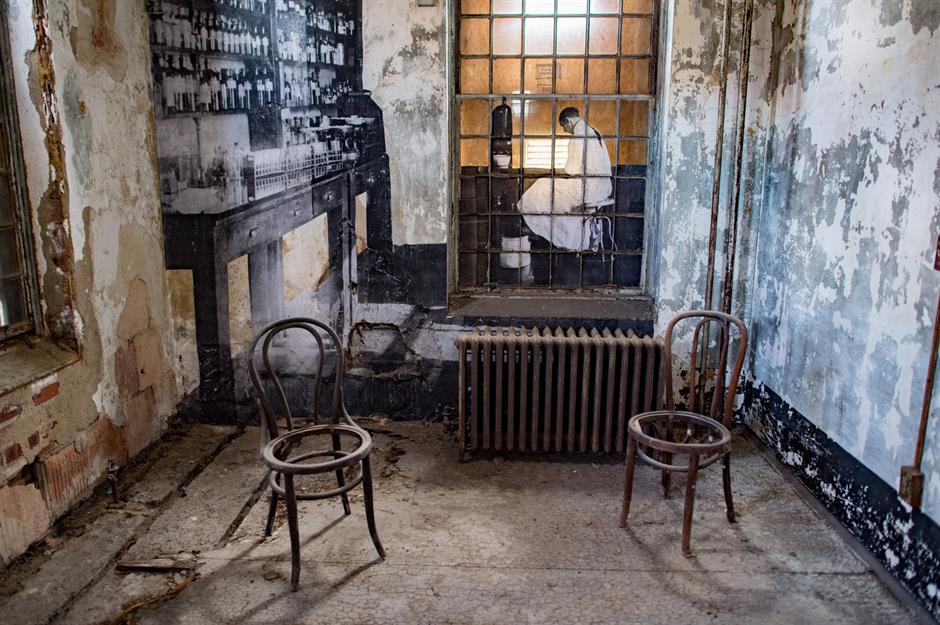
This famed hospital on Ellis Island opened in the 1900s, just after the turn of the century. It was in operation until the 1930s, before it was completely abandoned in 1954. When it was open, the 22-building complex treated many thousands of immigrants who arrived, hoping for a new life.
Today, poignant images by French artist JR plaster the peeling walls, and a hard-hat tour allows visitors to explore the unrestored site, from the kitchens and the wards to the treatment rooms. Ninety-minute tours are currently available daily.
New Mexico: Shakespeare, Hidalgo County

This former mining town was first christened Shakespeare in 1879, after silver ore was found nearby in the early 1870s. It burgeoned quickly at the end of the 1800s, flourishing until the 1920s, when the mines eventually closed, and famed outlaws William ‘Russian Bill’ Tattenbaum and Sandy King both met their fate here.
Visitors can get a true taste of the Old West and walk the streets once traveled by Billy the Kid on a two-hour tour that takes in numerous of the time-worn buildings, from the old mail station to the multi-purpose Grant House. Private tours are now also available.
New York: Bannerman Castle, Pollepel Island
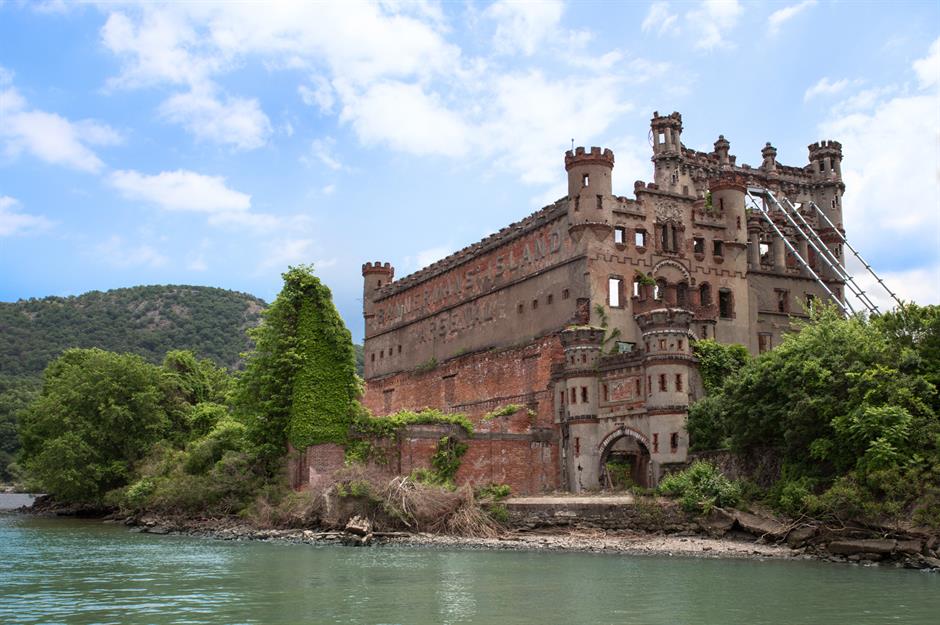
Standing guard over the Hudson River, some 60 miles north of New York City, is the abandoned Bannerman Castle. It’s named after Scotsman Francis Bannerman VI, who owned a weaponry business and built this isolated island fortress in the early 1900s for use as an arsenal.
Abandoned since the 1950s, the castle now stands in ruins, its turrets crumbling and greenery forcing its way through glassless windows. Still, it's a majestic site and a range of tours and a cruise of the surrounding waters are available.
North Carolina: Portsmouth Village, Portsmouth Island
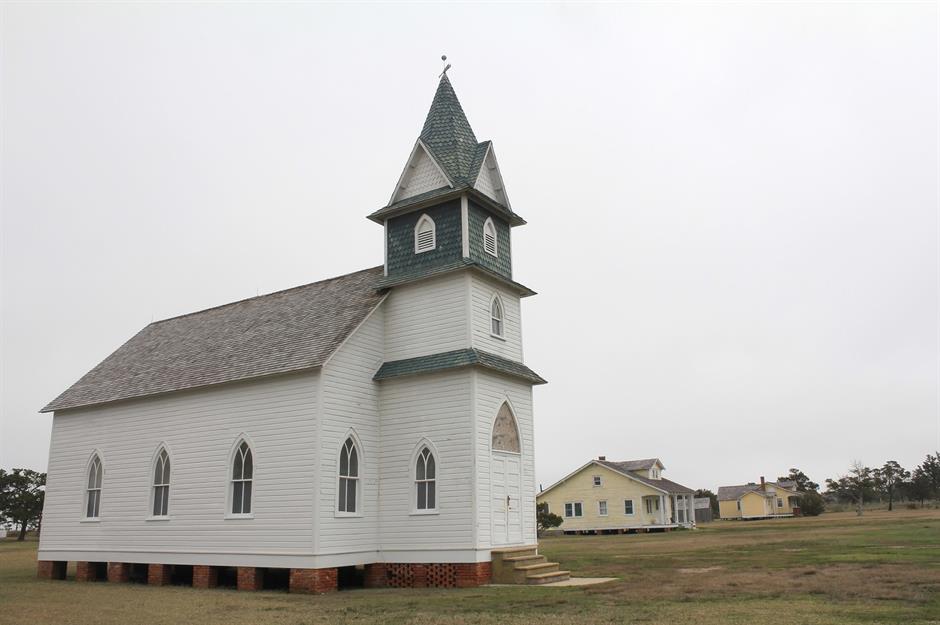
Remote Portsmouth Island, part of the windswept Outer Banks, has a secret. Beyond its unspoiled beaches lies an abandoned village whose buildings remain in impressive condition. Established in 1752, the town here once thrived due to a booming shipping industry.
However, the village took a hit during the Civil War and its main source of commerce dwindled. The final two residents wouldn't leave the all-but-deserted isle until 1971. Visitors can take a tour and wander through the deserted village.
North Dakota: Arena, Burleigh County
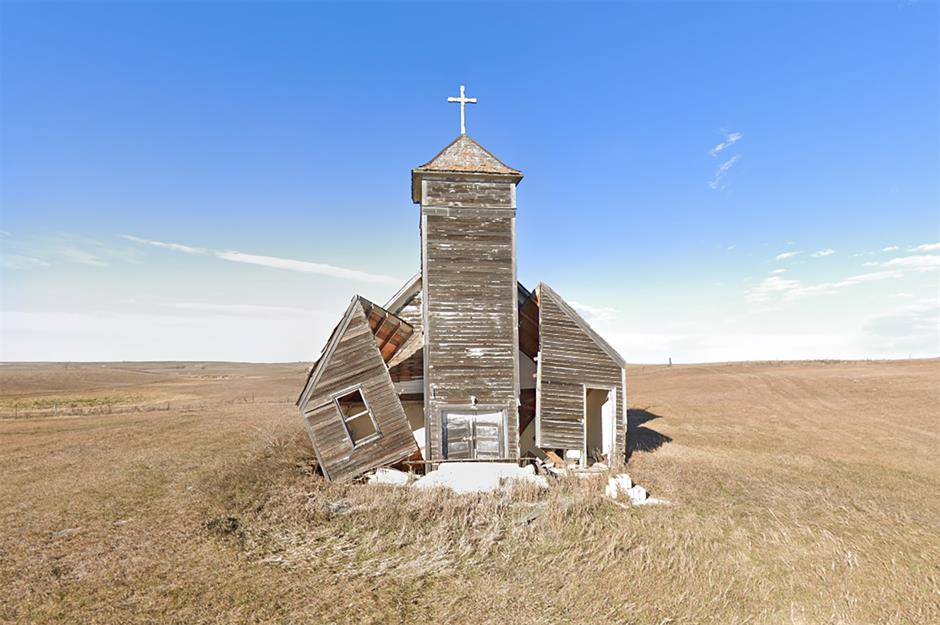
North Dakota has plenty of ghost towns, but this spot, about 35 miles northeast of Bismarck in the center of the state, is one of the eeriest and the most enchanting.
Not much remains of the little town, which was pummeled by the Great Depression and never really recovered. Today, visitors can see a decaying school, a few perishing houses and, most fascinating of all, the enigmatic St. John’s Lutheran Church.
Ohio: Ohio State Reformatory, Mansfield
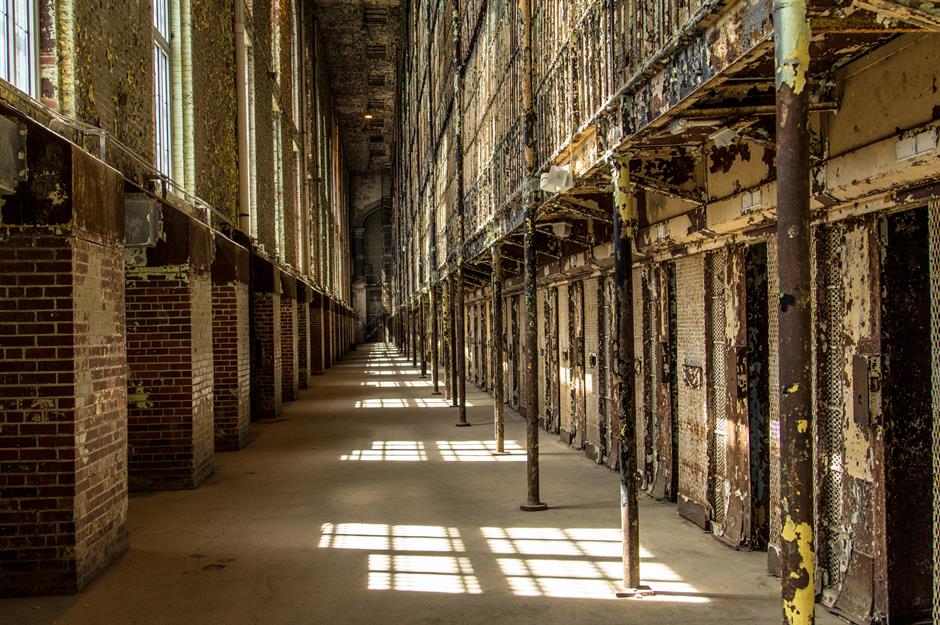
Construction of the reformatory began in 1886, on the site of a one-time training ground for Civil War soldiers, and, over the years, thousands of prisoners would live out their days here. But reports of poor conditions and maltreatment of prisoners meant the site was abandoned by 1990.
Now self-guided and guided tours take visitors through the spine-chilling corridors with their moldering cell blocks and rusting iron bars. The prison was also famously used as a location for 1994 movie The Shawshank Redemption.
Oklahoma: Texola, Beckham County

A quirky little ghost town right on the border with Texas, Texola still has a teeny-tiny community as well as a plethora of atmospheric abandoned buildings and rusted out cars.
The most striking of the decaying properties is a deserted bar named Watering Hole #2, painted a bright sky blue. There's also a vacant cemetery, a tiny 'one room jail,' and a rusting gas station proudly bearing the words 'No place like Texola.'
Oregon: Golden, Josephine County

Now a National Heritage Site, the aptly named Golden ghost town was home to a community of around 100 people, drawn in by the promise of gold. As goes the story of many an early Gold Rush town, when the precious metal dried up, so too did the community, and the town was abandoned in the 20th century.
A beaten-up church, an old house, a post office, and a shed remain a tribute to this slice of the past, and tourists can visit for free.
Pennsylvania: Eastern State Penitentiary, Philadelphia
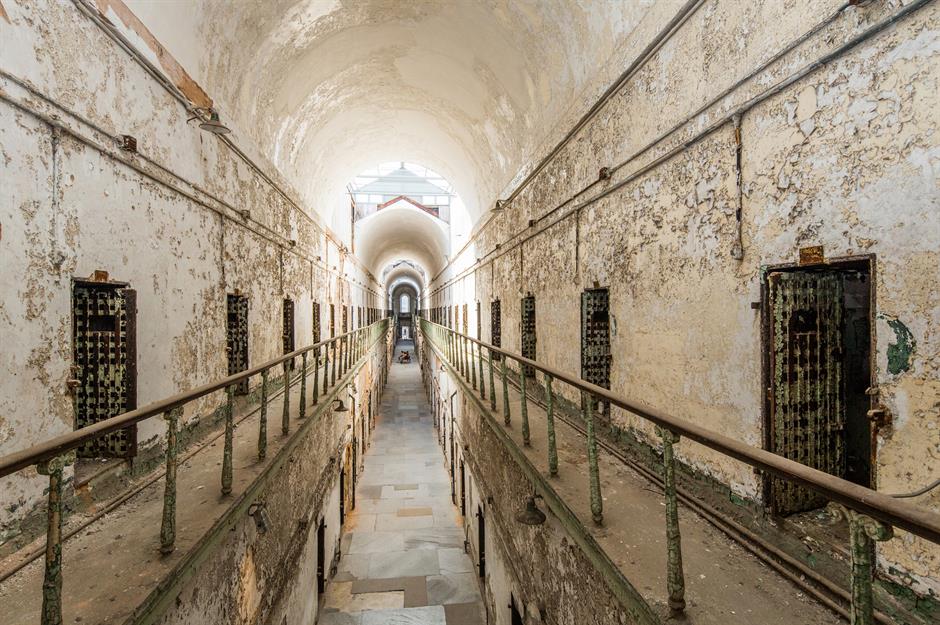
Typically one of America's most visited abandoned places, this deserted prison bills itself ‘the world's first true penitentiary.’ It was built in the 1820s in a grand, fortress-like style designed to impress and to intimidate, and would stay open until 1970, following a dangerous riot in 1961.
The building remains something of a time capsule, and its dilapidated cell blocks and deserted corridors and towers can still be explored on day or night museum tours.
Rhode Island: Fort Wetherill, Jamestown
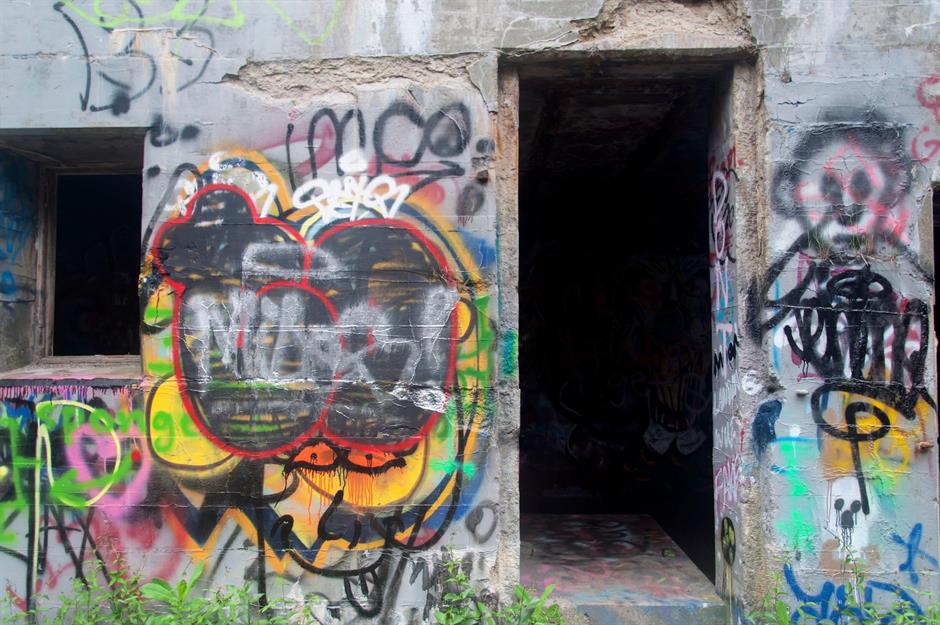
Perched on the edge of the rocky cliffs of Jamestown is the long-abandoned Fort Wetherill. Built in 1896 on the site of a previous fort, which had stood on the spot since the American Revolution, Wetherill was made up of seven concrete gun batteries and was active during both World Wars.
It was deserted in 1946 and stood forgotten among the scrub until 1972, when it was turned into a state park. The crumbling buildings and the remains of an old tramway system still stand, but have been overgrown with vegetation and covered in graffiti.
South Carolina: Atalaya Castle, Huntington Beach State Park

Once a fabulous estate, Atalaya Castle was built in the early 1930s by philanthropist Archer Huntington, who was inspired by Spanish and Moorish architecture.
Intended as a winter retreat for himself and his beloved artist wife Anna, the dazzling property boasted a plant-filled courtyard, a sculpture garden, and an oceanside location. But once Archer passed away in 1955, Anna left the house behind. Today, guided tours take in deserted rooms, including Anna’s studios.
South Dakota: Okaton, Jones County
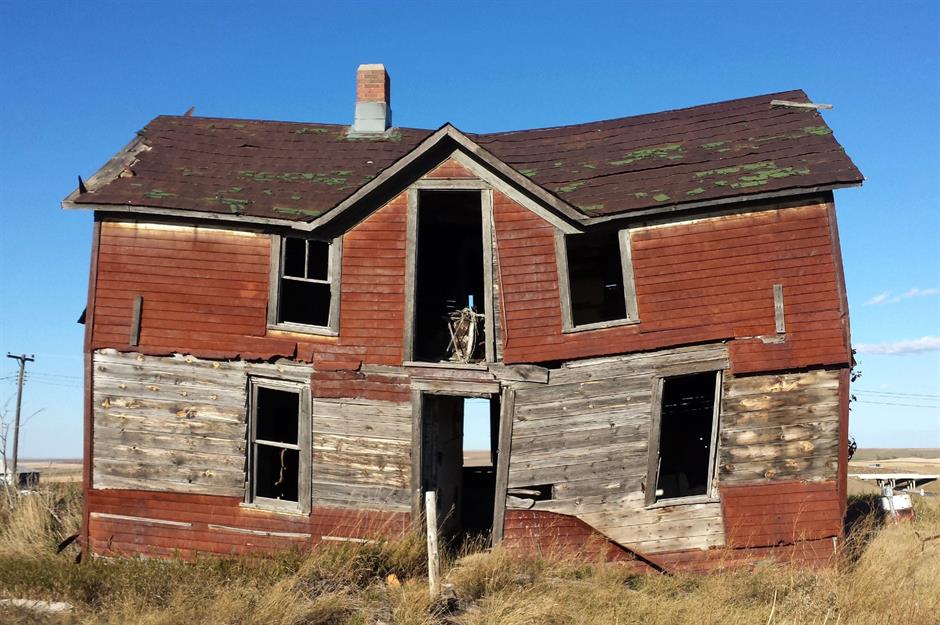
An atmospheric ghost town in the South Dakotan prairies, Okaton was once a busy railroad town. But workers soon moved on, and the hamlet fell into decline through the latter half of the 20th century.
An attempt by a local family to capitalize on Okaton's new ghost-town status and form an attraction was short-lived too. Visitors passing through will see the striking remains of an old grain elevator, plus rusting railroad tracks overgrown with greenery.
Tennessee: Elkmont Historic District, Great Smoky Mountains National Park

Four photogenic wooden cabins are hidden away in the woodland of the Great Smoky Mountains National Park, forming the Daisy Town part of the Elkmont Historic District. They were originally home to loggers, before becoming swish vacation retreats in the early 1900s, but eventually fell into disrepair.
Many similar structures in the area have been demolished, but these four deserted cabins have been stabilized. They can be viewed from outside during Jeep excursions.
Texas: Terlingua, Brewster County
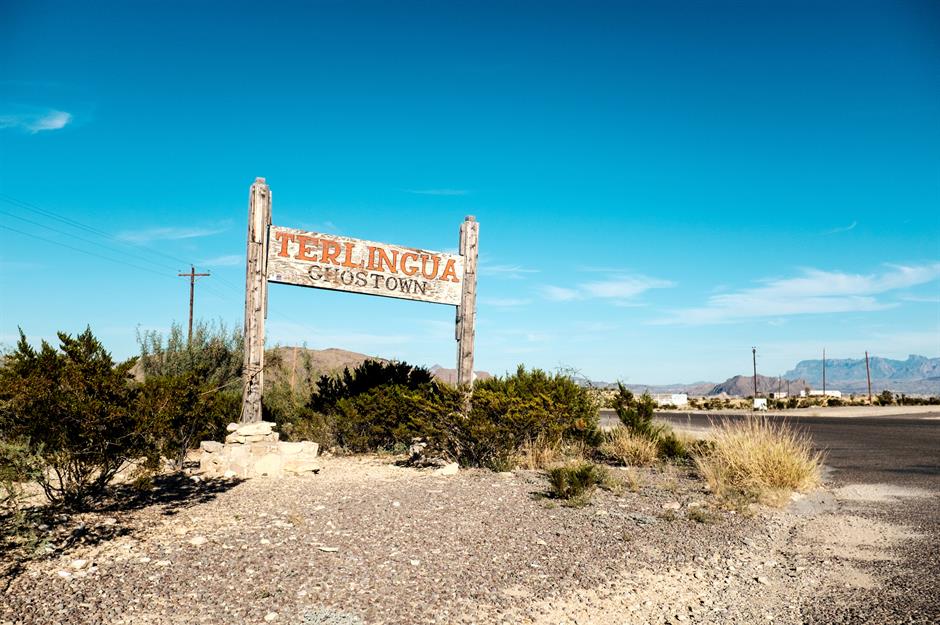
It wasn’t gold that had people rushing to this former mining town towards the end of the 1800s, it was cinnabar – a kind of mercury ore. But by the time World War II began, the mines were losing money and residents were draining from the town.
Evidence of the site’s glory days can still be seen, from crumbling stone walls and huts to car shells. Beyond the ruins, there's still a community here who are used to guided tours passing through.
Utah: Grafton, Washington County

The rugged red peaks of Zion National Park watch over this ghost town. Once one of a large string of nearby villages, it was established by Mormon settlers from around 1859 – though the site we see today was built up in 1862 after a flood devastated the original town.
It was inhabited until the early 1900s, when most residents moved west in search of a new life. The fascinating deserted homes, the atmospheric cemetery, and the sheer natural beauty typically draw visitors to the site.
Vermont: Trapp Chapel, Stowe
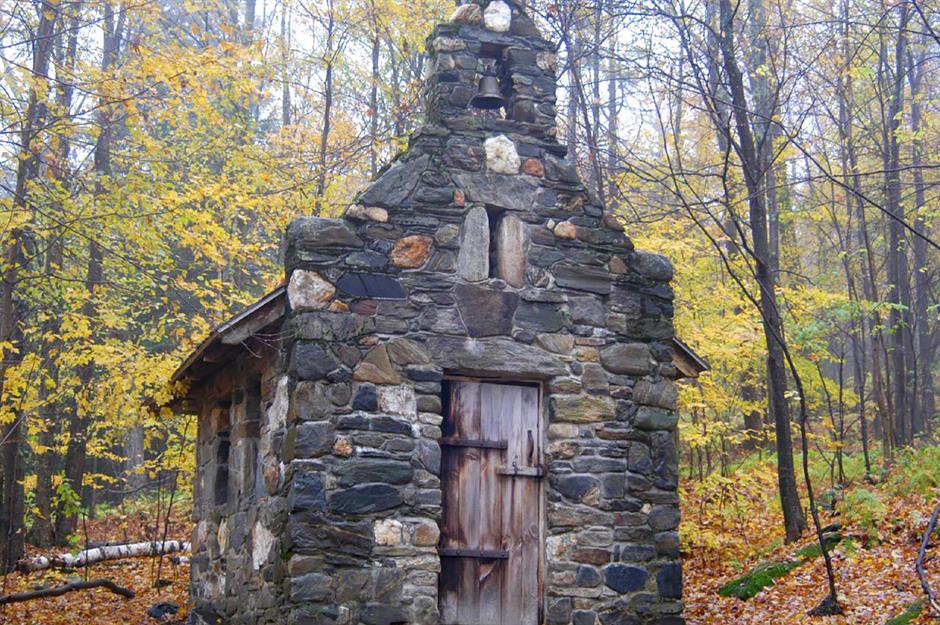
Compared to the many fading ghost towns in the USA's west, the state of Vermont has few abandoned buildings, but a dinky stone chapel can be found in the wooded grounds of the Trapp Family Lodge in the pretty town of Stowe.
The Austrian-style lodge is still owned and operated by the von Trapp family (yes, the one from The Sound of Music), who moved to Stowe in the 1940s and opened the lodge to guests in 1950. A hike through the grounds leads to the picturesque chapel, reportedly built as a tribute to World War II soldiers.
Virginia: Swannanoa Palace, Afton
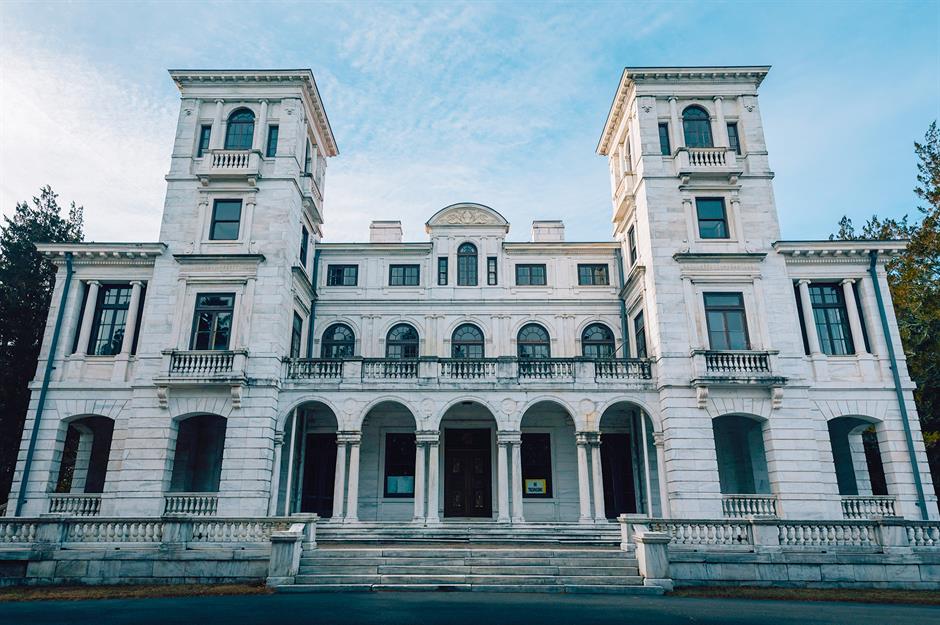
This stunning Italianate mansion retains much of its majesty even after years of abandonment. It dates back to 1912, when railroad heavyweight James Dooley decided to build this marble confection for his wife Sally May. The house has passed through many hands over the years, suffering periods of neglect and falling into disrepair.
Despite some peeling paint and untamed areas of the garden, it's still a sight to behold today. The house currently remains open for guided tours from May-November.
Washington: Fort Worden, Port Townsend
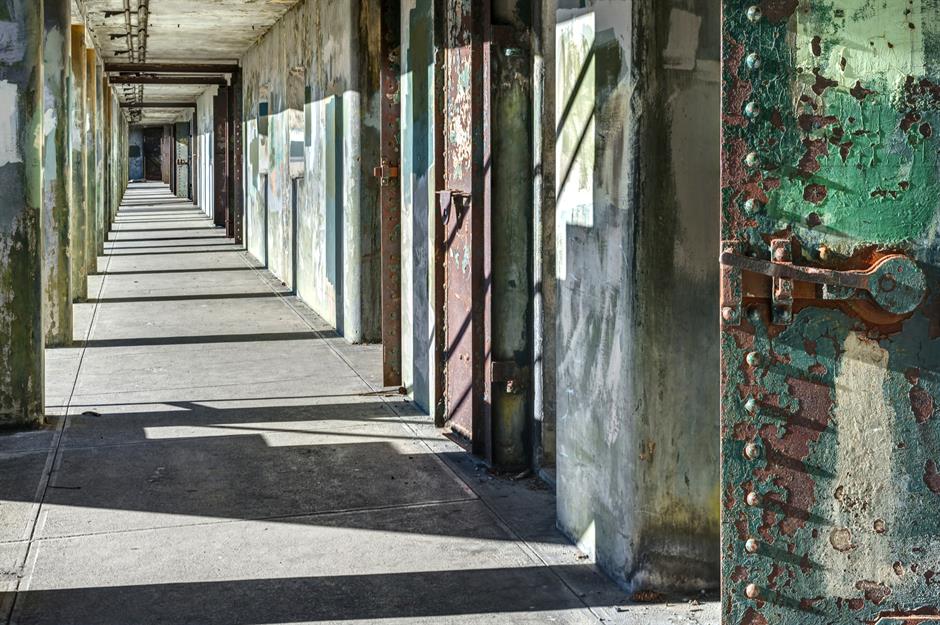
Darkened tunnels and eerie passageways make up Fort Worden, a defensive structure built between 1898 and 1917. It’s the best preserved of three military batteries that once guarded the Washington coast, together known as the Triangle of Fire.
Today, the deserted remains – including pillboxes and creepy bunkers – form part of the 432-acre Fort Worden Historical State Park overlooking Admiralty Inlet.
West Virginia: Lake Shawnee Amusement Park, Mercer County
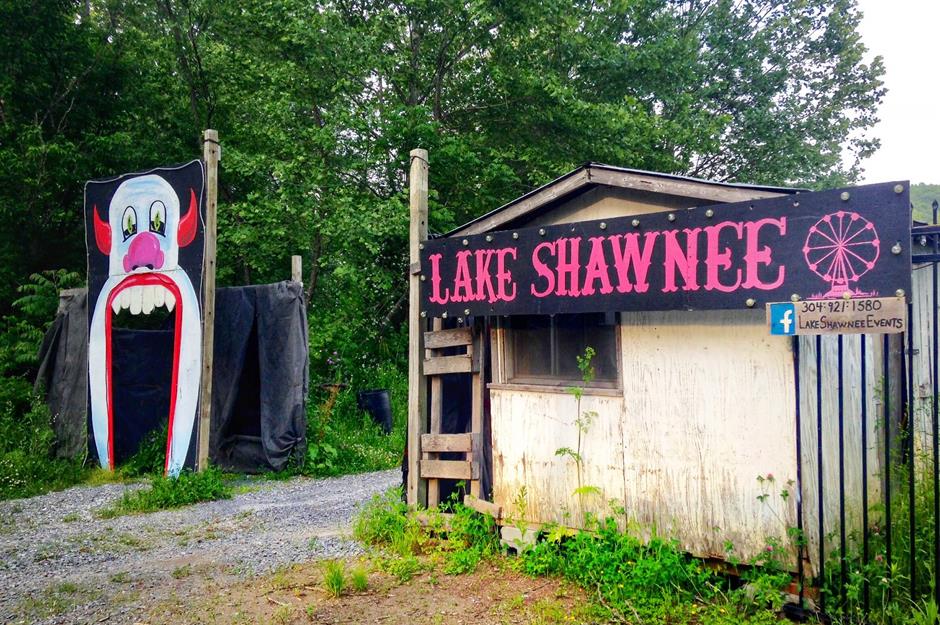
Lake Shawnee, an abandoned amusement park near Princeton in southern West Virginia, was once a loud, proud attraction. Built in the 1920s, it was filled with swings and slides, as well as a speakeasy and a dance hall – but the park has suffered a checkered past, and eventually closed in the 1960s after a string of chilling deaths on the site.
The park reopened in the 1980s before closing again and all that remains are remnants including a Ferris wheel and groaning swing ride, but it hosts regular ghost tours and other spooky events.
Wisconsin: Maribel Caves Hotel, Maribel
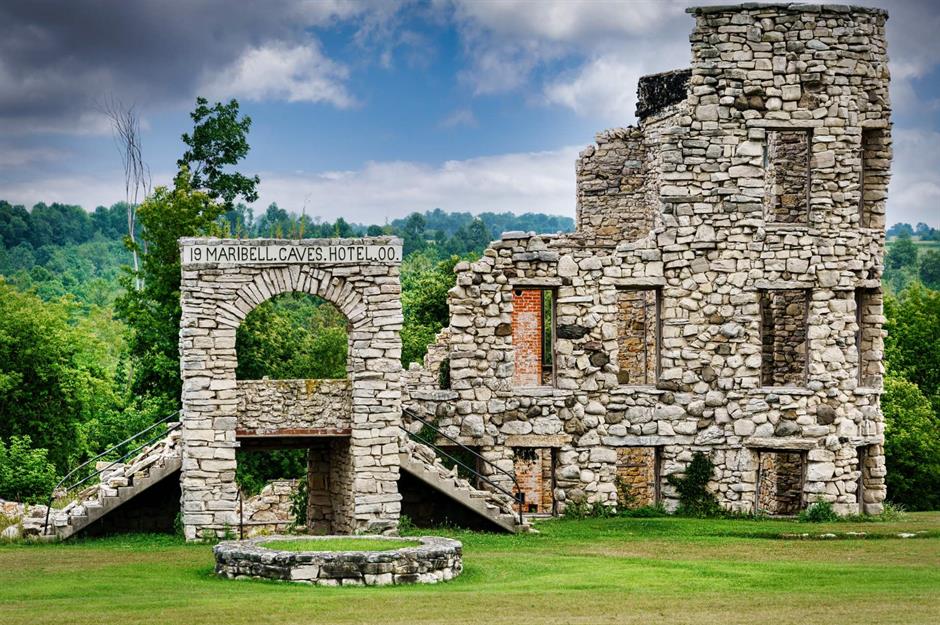
This was once a glorious hotel, home to intriguing rumors about gangsters and shady goings on. However, in 1985, tragedy struck the hotel when it was engulfed in flames, and Maribel Caves Hotel has since been exposed to the harsh Wisconsin winters making what used to be a beautiful retreat look like a set out of a horror movie.
Tragedy struck again in 2013 when a tornado swept through the area and damaged what was left of the hotel. It is now just a destination for local trailgoers and intrepid explorers.
Wyoming: South Pass City, Fremont County
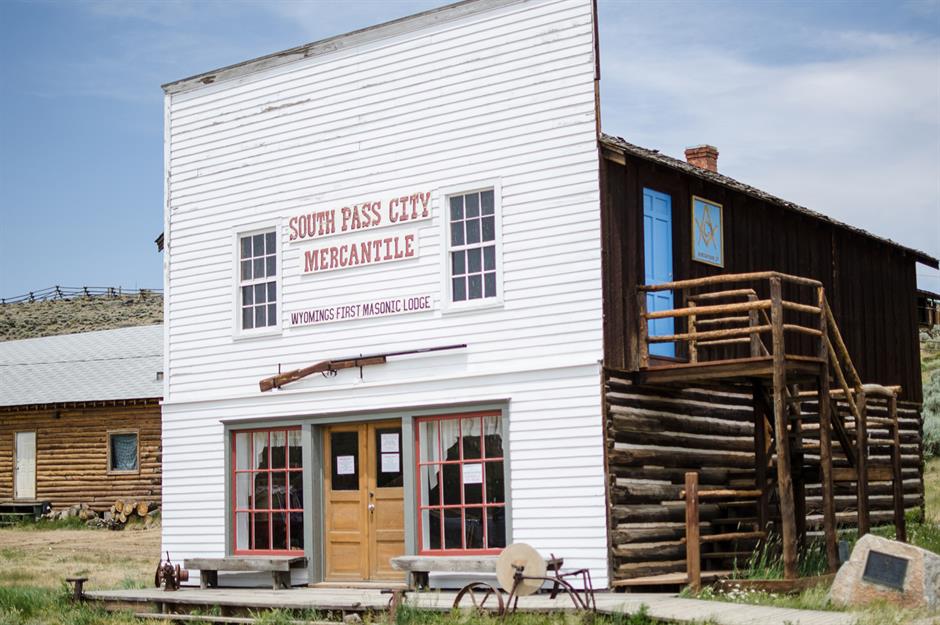
Built up in the 1860s after gold ore was discovered, South Pass City flourished while the mining industry boomed, but it was abandoned by the 1930s, following serious financial strains.
Today, the town’s historic deserted buildings are impressively preserved and open to visitors from mid-May to the end of September – highlights include the Exchange Saloon and card room, the blacksmith shop, and the Sweetwater County Jail.
Now discover America's amazing abandoned places, then and now
Comments
Be the first to comment
Do you want to comment on this article? You need to be signed in for this feature